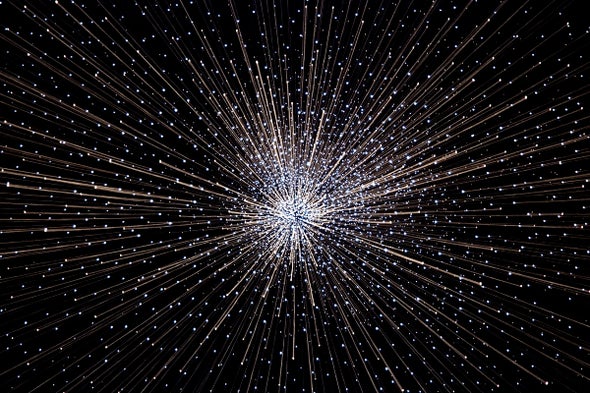(单词翻译:单击)
听力文本
This is Scientific American's 60-second Science, I'm Christopher Intagliata.
In the summer of 2015, a strange delivery arrived in Munich, Germany: 25 boxes of still-frozen snow—sent all the way from Antarctica. The reason for shipping 1,100 pounds of snow halfway around the world? Scientists were hunting for interstellar dust—which might hold clues about our place in the universe.
So first scientists melted the snow and then filtered it for fine particles. Analyzing the remaining dust with mass spectrometry, they found traces of the isotope iron-60, which is primarily produced in two ways: by exploding supernovas or by cosmic rays zapping interplanetary dust. But it's also produced in nuclear reactions here on Earth, by bombs or nuclear reactors.
So to determine how much of the stuff was truly interstellar—from beyond our solar system—the researchers used other isotopic clues to screen out quantities of iron-60 produced by nuclear reactions and cosmic rays. And they still had some iron-60 left over to account for—the stuff produced by supernovas.

"Just by looking at something which is on our own planet to learn something which is so far away and happened so many millions of years ago—I mean, that's pretty amazing. And that's why I really like this work." Dominik Koll, an experimental nuclear physicist at the Australian National University. His team reported the results in the journal Physical Review Letters.
Koll says this iron-60 might be showering down on us from the Local Interstellar Cloud, the patch of space the solar system is moving through right now. And if the cloud contains material produced by supernovas, Koll says, it could be the ancient remnants of exploding stars—a clue to the structure and formation of the universe. Luckily, we can investigate it all by hunting for dust, right here on spaceship Earth.
Thanks for listening for Scientific American — 60-Second Science. I'm Christopher Intagliata.
参考译文
这里是科学美国人——60秒科学系列,我是克里斯托弗·因塔格里塔。
2015年夏天,一份奇怪的快递——25盒仍处于冰冻状态的雪——从南极洲运抵德国慕尼黑。为什么要从世界尽头运来1100磅雪呢?因为科学家正在寻找星际尘埃,这可能为我们在宇宙中所处的位置提供线索。
首先,科学家将雪融化,然后过滤出细颗粒。用质谱分析了剩余尘埃后,他们发现了同位素铁-60的痕迹,同位素铁-60主要由两种方法产生:超新星爆炸或是宇宙射线撞击行星间的尘埃。但地球上的炸弹或核反应堆产生的核反应也能产生同位素铁-60。
因此,为了确定其中有多少真正来自太阳系外的星际,研究人员用其他同位素线索筛选出核反应和宇宙射线产生的同位素铁-60。他们还剩下一些同位素铁-60来解释超新星产生的物质。
“仅仅通过观察地球上的一些东西,我们就能了解到遥远的、发生在数百万年前的事情,这令人相当惊讶。这就是我喜欢这项工作的原因。”澳大利亚国立大学的实验核物理学家多米尼克·科尔说到。他的团队将研究结果发表在《物理评论快报》上。
科尔表示,同位素铁-60可能正从太阳系正在穿越的本地星际云中向我们倾泻而下。科尔说,如果云团中含有超新星产生的物质,那么它可能是爆炸恒星的古老残留物,这是宇宙结构和形成的线索。幸运的是,我们可以通过在地球飞船上寻找尘埃来研究这一切。
谢谢大家收听科学美国人——60秒科学。我是克里斯托弗·因塔利亚塔。
译文为可可英语翻译,未经授权请勿转载!
重点讲解
重点讲解:
1. hunt for 搜寻;寻找;
A forensic team was hunting for clues.
法医小组正在寻找线索。
2. screen out 筛除;
The company screened out applicants motivated only by money.
该公司剔除了那些一心向钱看的申请者。
3. account for 解释;
Now, the gene they discovered today doesn't account for all those cases.
不过,他们现在发现的基因无法解释所有的病例。
4. right now 现在;此时此刻;
Right now, I've got other problems that are pressing on me.
现在又有其他一些问题困扰着我。


